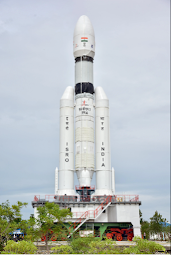Ram temple ayodhya U.P (in India)
Ram temple udghatan date 22 january 2024
राम मंदिर उदघाटन दिनांक 22 जनवरी 2024
The Lord Ram Temple at Ayodhya: Its History, Architecture, importance and How to Get There.
अयोध्या में भगवान राम मंदिर: इसका इतिहास, वास्तुकला, महत्व और वहां कैसे पहुंचें.
Situated in Ayodhya, Uttar Pradesh, India, the Ayodhya Ram Mandir, also called the Lord Shri Ram shrine, is a Hindu shrine. In India, the temple has long been at the heart of a religious and political conflict. Hindus around the world are eager for the new Hindu temple at Ram Janm Bhumi to open, and construction is now underway. We are well informed on the Ayodhya Ram Mandir's 2024 opening. It is scheduled to open on January 24, 2024, with an official opening by Shri Narendra Modi, the Prime Minister of India. The temple is located in Ayodhya, which is revered since it is the birthplace of Lord Shri Ram. It is anticipated that the temple will be finished on February 24, 2024.
भारत के उत्तर प्रदेश के अयोध्या में स्थित, अयोध्या राम मंदिर, जिसे भगवान श्री राम तीर्थस्थल भी कहा जाता है, एक हिंदू मंदिर है। भारत में, मंदिर लंबे समय से धार्मिक और राजनीतिक संघर्ष का केंद्र रहा है। दुनिया भर के हिंदू राम जन्म भूमि पर नए हिंदू मंदिर के उद्घाटन के लिए उत्सुक हैं, और अब निर्माण कार्य चल रहा है। हमें 2024 में अयोध्या राम मंदिर के उद्घाटन के बारे में अच्छी जानकारी है। यह 24 जनवरी, 2024 को भारत के प्रधान मंत्री श्री नरेंद्र मोदी द्वारा आधिकारिक उद्घाटन के साथ खुलने वाला है। यह मंदिर अयोध्या में स्थित है, जो भगवान श्री राम की जन्मभूमि होने के कारण पूजनीय है। अनुमान है कि मंदिर 24 फरवरी 2024 को बनकर तैयार हो जाएगा।
Ayodhya Ram Mandir past
अयोध्या राम मंदिर का अतीत
The Ayodhya Ram Mandir has a long and rich history. One of the most venerated Hindu deities, Lord Ram, is said to have given birth on the location where the temple is located. In the sixteenth century, the Mughal emperor Babur destroyed the temple and erected a mosque in its stead. The mosque, also referred to as the Babri Masjid, had been constructed on the site for centuries before Hindu extremists destroyed it in 1992, sparking severe bloodshed and intercommunal strife throughout the nation.
अयोध्या राम मंदिर का एक लंबा और समृद्ध इतिहास है। कहा जाता है कि सबसे प्रतिष्ठित हिंदू देवताओं में से एक, भगवान राम ने उसी स्थान पर जन्म लिया था जहां मंदिर स्थित है। सोलहवीं शताब्दी में, मुगल सम्राट बाबर ने मंदिर को नष्ट कर दिया और उसके स्थान पर एक मस्जिद बनवाई। मस्जिद, जिसे बाबरी मस्जिद भी कहा जाता है, सदियों से इस स्थल पर बनाई गई थी, 1992 में हिंदू चरमपंथियों ने इसे नष्ट कर दिया था, जिससे पूरे देश में गंभीर रक्तपात और अंतर-सांप्रदायिक संघर्ष छिड़ गया था।
For many years, the Ayodhya conflict has dominated Indian politics. The point of contention was who owned the land where the Babri Masjid was located and if Lord Ram was born there. The
कई वर्षों से अयोध्या विवाद भारतीय राजनीति पर हावी रहा है। विवाद का मुद्दा यह था कि जहां बाबरी मस्जिद स्थित थी उस जमीन का मालिक कौन था और क्या भगवान राम का जन्म वहीं हुआ था।
Architecture and Features of the Ayodhya Ram Mandir
अयोध्या राम मंदिर की वास्तुकला और विशेषताएं
The Ayodhya Ram Mandir is a magnificent temple with towering spires, or shikharas, that is constructed in the Nagara style of temple building. The temple occupies 2.77 acres and was constructed using pink sandstone. There are other smaller shrines devoted to different Hindu deities within the temple, which is encircled by a sizable courtyard. The enormous Shaligram stone, a black stone imported from the Gandaki river in Nepal and thought to represent Lord Ram, is the temple's most remarkable feature.
अयोध्या राम मंदिर ऊंचे शिखरों वाला एक भव्य मंदिर है, जिसका निर्माण मंदिर निर्माण की नागर शैली में किया गया है। मंदिर 2.77 एकड़ में फैला है और इसका निर्माण गुलाबी बलुआ पत्थर का उपयोग करके किया गया था। मंदिर के भीतर विभिन्न हिंदू देवताओं को समर्पित अन्य छोटे मंदिर हैं, जो एक बड़े प्रांगण से घिरा हुआ है। विशाल शालिग्राम पत्थर, नेपाल में गंडकी नदी से आयातित एक काला पत्थर और भगवान राम का प्रतिनिधित्व करने वाला माना जाता है, मंदिर की सबसे उल्लेखनीय विशेषता है।















